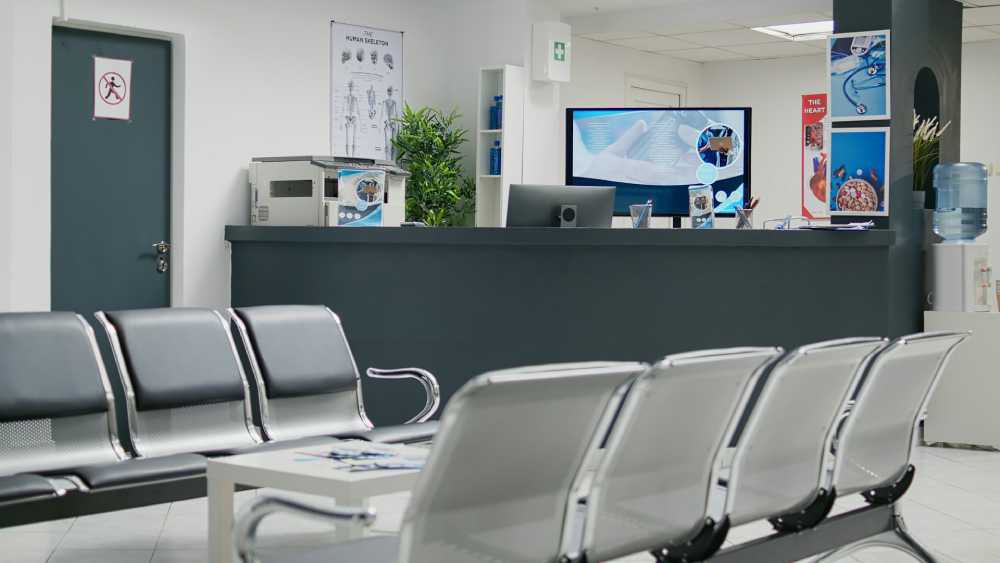The healthcare environment plays a pivotal role in a patient’s recovery journey. Hospital ambiance has a profound psychological impact on patients, visitors, and staff, influencing stress levels and overall well-being. It is where ambient entertainment steps in, potentially transforming a traditional clinical setting into a space of comfort and healing.
Hospital stays can be less stressful and anxious by incorporating media elements such as relaxing music, waiting room TV, and other sensory experiences. Its goal is to produce a serene environment to improve patient satisfaction and promote wellness.
An inviting environment can significantly expedite recovery by promoting a sense of normalcy and distraction from pain or discomfort. Studies have found that pleasing visual and auditory stimuli alleviate stress and enhance healing. Thus, integrating ambient entertainment into healthcare settings emerges as an innovative approach to uplift a patient’s mood, reduce perceived wait times, and improve their cognitive outlook.
Examining the Impact of Visual Media on Patient Well-being
The influence of visual media on patient health can’t be overstated. Images and video content that evoke serenity can be critical in a patient’s emotional and mental state. A study highlighted by NCBI illustrates the positive impacts of serene imagery, such as aquariums and nature scenes, on patients’ moods and stress reduction.
It aligns with evidence-based design in healthcare, which suggests that well-designed physical environments enhance patient outcomes. Visual media in hospitals is becoming an essential element of the patient experience, offering an escape from the clinical ambiance and contributing to a more holistic approach to patient care.
The Evolution of Hospital Entertainment Systems
Early hospital entertainment systems were rudimentary at best, often consisting of a solitary television in the corner of a standard room with limited channels and viewing options. However, as patient care has become more personalized, so have entertainment options. We’ve seen the advent of on-demand content, personalized consoles, and internet-enabled devices that cater to individual tastes and preferences.
No longer is hospital entertainment one-size-fits-all; it’s evolved into a customizable, patient-focused service that acknowledges the diverse needs of each individual in the care continuum. These advances are crucial for delivering supportive, non-disruptive entertainment options that align with recovery protocols and respect patient privacy.
Designing Patient-Centric Media Content
The content streamed to patients’ screens must not only entertain but also adhere to the delicate nature of the healthcare environment. Hospitals must curate programming carefully, offering a blend of gentle, non-disruptive content that serves a therapeutic purpose. From nature documentaries that instill calmness to educational health segments that inform, the aim is to provide an enriching media diet that supports the healing process.
Special attention is given to creating content that can be enjoyed comfortably, devoid of any elements that may trigger stress or discomfort. In essence, the design of patient-centric media content is an art that balances the benefits of entertainment with the healthcare mandate of ‘first, not harm.’
Benefits of Implementing Modern Entertainment Solutions in Hospitals
Introducing modern entertainment solutions in healthcare settings extends beyond patient satisfaction; it embodies a comprehensive capacity to enhance healing environments. Patients relish an element of control and familiarity when they can choose what to watch or listen to, akin to the comforts of home.
This sense of autonomy is crucial for fostering a positive mindset during recovery. Studies have indicated that a favorable hospital environment characterized by enjoyable media options can alleviate the monotony and loneliness of long-term hospitalization.
Furthermore, a happier patient often equates to a more cooperative one, which can benefit medical staff as they administer care. Thus, installing these solutions reflects an investment in technology and the humanity of patient care.
A Look at Implementation: Best Practices and Challenges
Deploying ambient entertainment solutions has its complexities. Hospital administrations must balance the desire for advanced systems with practical concerns such as budget considerations, infrastructure compatibility, and staff training to operate the new technology efficiently. It’s crucial to embrace a phased approach for gradual integration and assessment at each step.
Maintaining such systems to ensure they’re operational and up-to-date can also be resource-intensive. The challenges are tangible but surmountable with strategic planning and stakeholder engagement, paving the way for a modern, patient-centric environment.
The Future of Ambient Entertainment in Healthcare Settings
Looking forward suggests a future where ambient entertainment in healthcare is dynamic and interactive. Virtual reality (VR) experiences that simulate tranquil outdoor spaces could become commonplace, offering therapeutic benefits and a welcome distraction from the clinical setting. Advancements in this arena may include:
- Customization options powered by artificial intelligence.
- It is providing content that can adapt to a patient’s mood.
- They are even assisting in physical rehabilitation.
Integrating innovative technology with entertainment systems can revolutionize patient engagement and hospital experience.
Ethical Considerations and Privacy in Patient Entertainment
As hospitals embrace technologically advanced entertainment solutions, ethical considerations rise to the forefront. Protecting patient privacy is paramount, as is ensuring that the content provided aligns with the highest standards of appropriateness and sensitivity. Any entertainment system installed must conform to HIPAA and other relevant healthcare regulations, guaranteeing that patient confidentiality is not compromised.
Moreover, the decision to include certain forms of entertainment should involve a thorough evaluation to prevent inadvertently contributing to a patient’s discomfort or anxiety. Such diligence affirms the hospital’s commitment to responsible care and respect for the individuals they serve.
Measuring the Effectiveness of Ambient Entertainment
Hospitals must develop means to quantify their efficacy to validate the introduction and ongoing investment in ambient entertainment systems. Key performance indicators include the length of patient stays, patient satisfaction scores, and any correlations between the availability of entertainment options and recovery rates.
Feedback from patients and staff provides insightful data that can drive improvements and demonstrate the tangible benefits of such systems. This evaluation process is not a one-time endeavor but an ongoing commitment to enhancing the patient experience through informed, data-driven adjustments to entertainment offerings.
Case Examples of Successful Ambient Entertainment in Hospitals
The real-world application of ambient entertainment in hospitals provides empirical evidence of its value. Several healthcare institutions have showcased the positive impact of tailored ambiance on patient outlook and healing. By sharing these case studies, hospitals can illustrate how such implementations can lead to demonstrable improvements in patient care.
Another aspect of these highlighted success stories is the cooperation of technology suppliers, hospital managers, and medical staff in enhancing patients’ quality of life.





